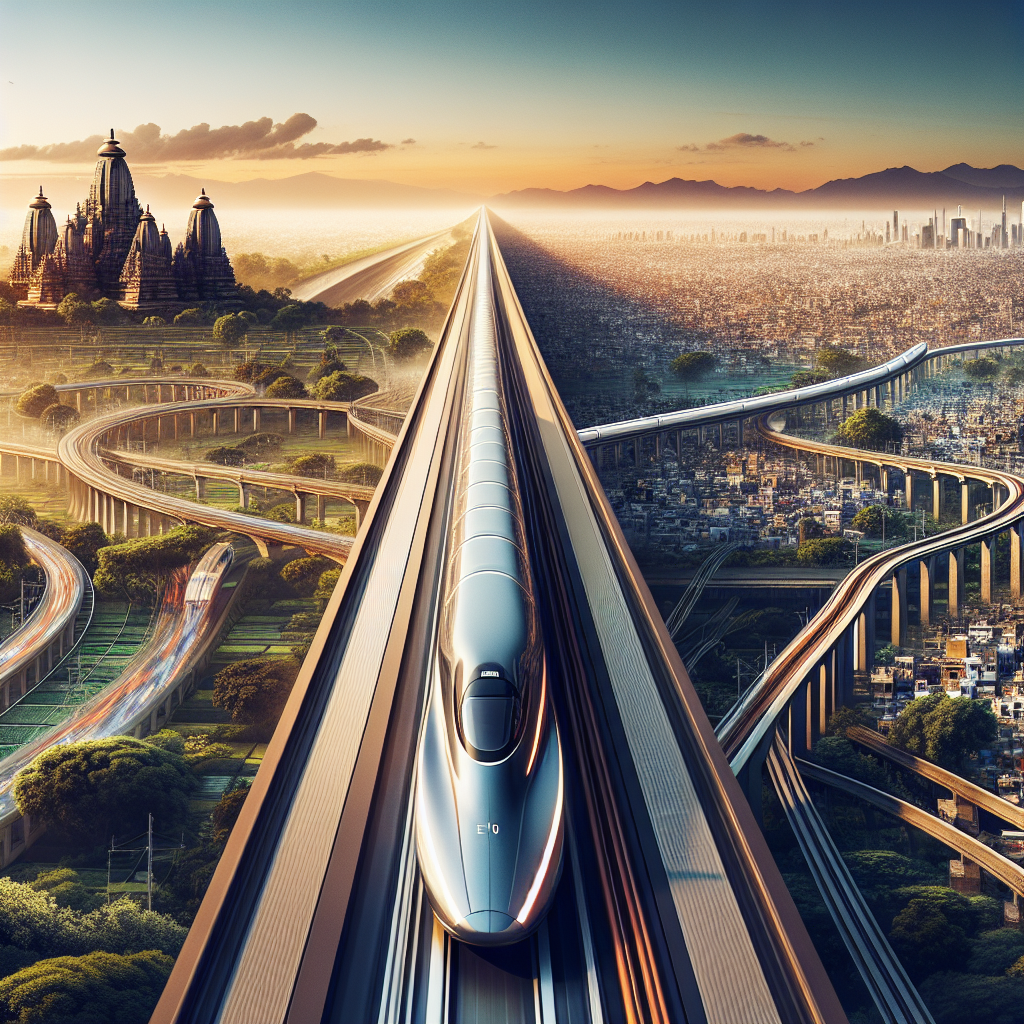2

The Future of Indian Travel: A Leap into High-Speed Rail
Revolutionizing Transport: The Introduction of Japan's E10 Trains
The Indian subcontinent is set for a transport revolution with the introduction of Japan's latest E10 high-speed trains on the highly anticipated Mumbai-Ahmedabad route. This project signifies both a technological and infrastructural milestone for India, aligning with Prime Minister Narendra Modi's vision for modernizing the nation's transport systems. Rooted in the Indo-Japanese collaboration, this venture not only promises to elevate the commuting experience but also highlights the strategic partnership between the two nations in aligning infrastructure with cutting-edge technology. As these E10 trains replace previous generations, travelers can anticipate a blend of speed, efficiency, and environmental consciousness, with green technology forming the backbone of these innovations.
What Makes the E10 Trains Standout
At the heart of this landmark shift are the remarkable features that set the E10 trains apart from their counterparts around the globe. The trains emphasize speed with top velocities reaching up to 320 km/h, drastically reducing travel time between Mumbai and Ahmedabad to a mere two hours compared to the current seven-hour journey. Beyond speed, the E10 trains prioritize comfort and convenience. Each cabin is designed with passenger comfort at the forefront, offering an array of amenities such as ergonomically designed seats, spacious legroom, and advanced onboard services. Furthermore, the trains integrate state-of-the-art sustainability features aimed at reducing the carbon footprint. With regenerative braking systems and efficient energy consumption designs, the E10 trains stand as paragons of eco-friendly transportation.
Infrastructure and Economic Impact
The infrastructure supporting these high-speed bullet trains is equally impressive, promising widespread economic benefits for India. The creation of this 508-kilometer corridor involves several logistical feats, including the construction of tunnels, bridges, and viaducts that enable seamless travel across diverse landscapes. The benefits extend beyond smoother transit; the project has sparked a surge in local employment, contributing to economic revitalization in the region. Moreover, the integration of high-speed rail is poised to catalyze human resource development across India's tech landscape, with new opportunities in engineering, rail technology, and operational management arising from the need to support and maintain this sophisticated system.
Challenges and Opportunities on the Horizon
Despite the promising prospects, the implementation of the high-speed train poses its own set of challenges. These range from land acquisition issues and regulatory approvals to the complexities of integrating cutting-edge technology within existing infrastructure. Yet, each challenge is met with innovative solutions driven by a desire to bring world-class rail travel to India. Opportunities also abound, particularly in the realm of technological collaboration and knowledge sharing between India and Japan. This partnership not only enhances rail connectivity but serves as a model for future bilateral projects across various sectors. The long-term vision sees India's high-speed rail not merely as a transit option but as a symbol of progress and modernization, reflecting the aspirations of a nation on the move towards a sustainable, integrated, and efficient transport future.
Source: Times of India
```


